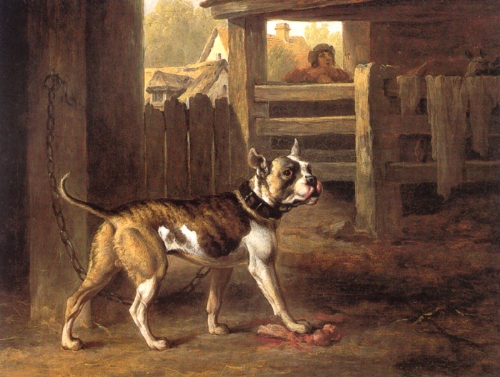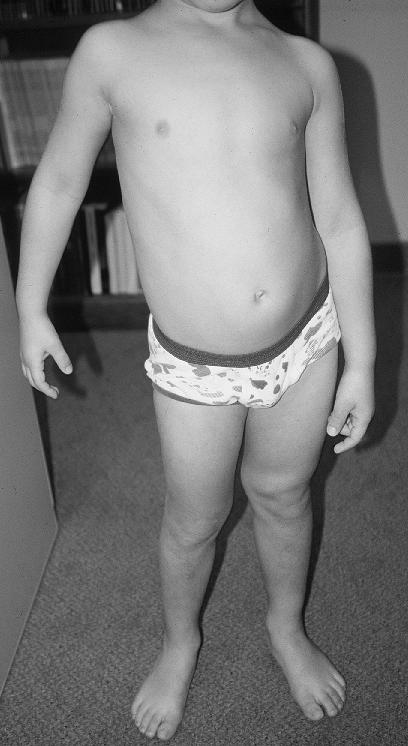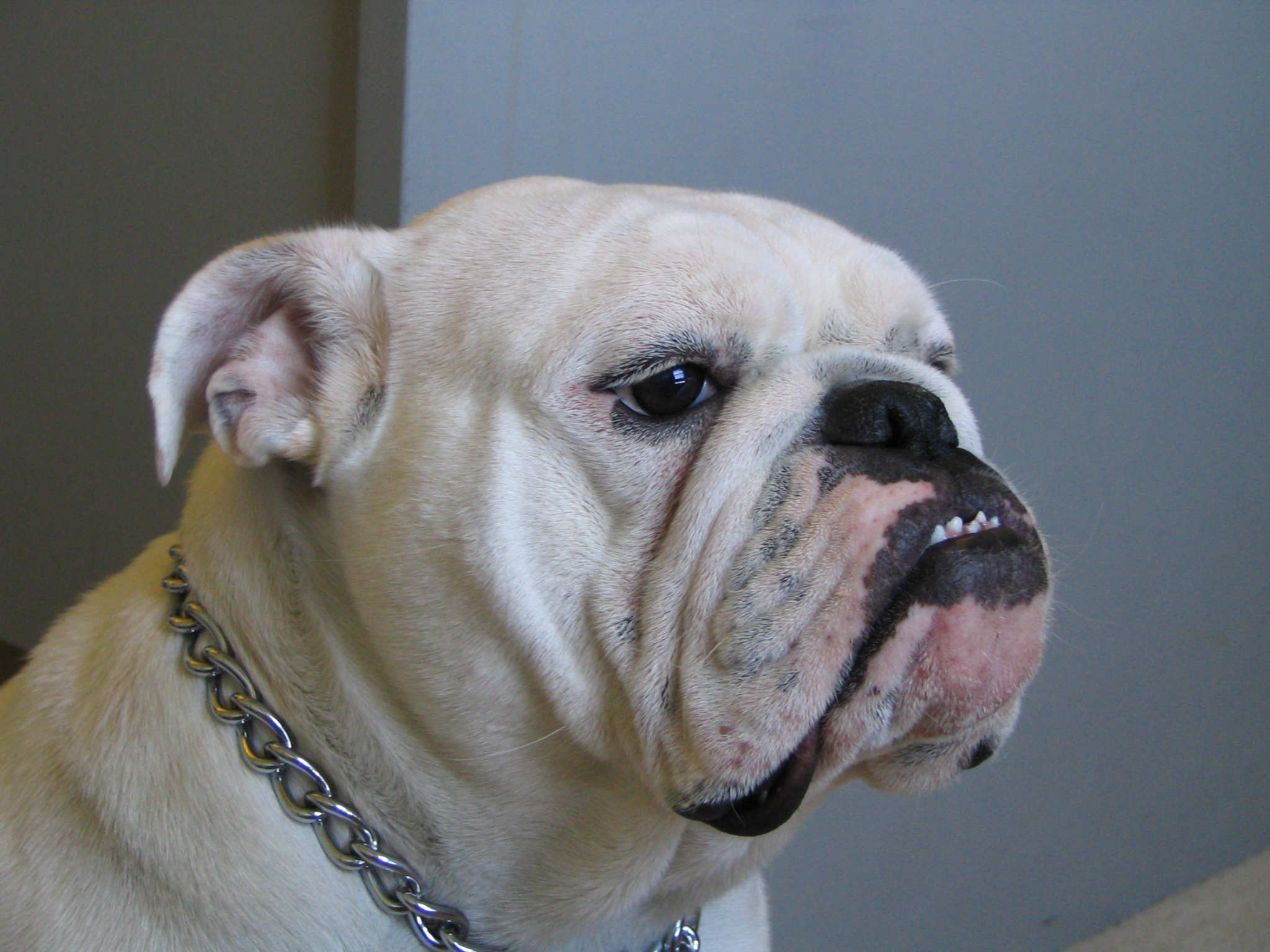|
Brachycephalic Airway Obstruction Syndrome
Brachycephalic obstructive airway syndrome (BOAS), also known as brachycephalic airway obstructive syndrome (BAOS), brachycephalic airway syndrome (BAS), and brachycephalic syndrome (BS), is a pathological condition affecting short nosed dogs and cats which can lead to severe respiratory distress. There are four different anatomical abnormalities that contribute to the disease, all of which occur more commonly in brachycephalic breeds: an elongated soft palate, stenotic nares, a hypoplastic trachea, and everted laryngeal saccules (a condition which occurs secondary to the other abnormalities). Because all of these components make it more difficult to breathe in situations of exercise, stress, or heat, an animal with these abnormalities may be unable to take deep or fast enough breaths to blow off carbon dioxide. This leads to distress and further increases respiratory rate and heart rate, creating a vicious cycle that can quickly lead to a life-threatening situation. Brachyceph ... [...More Info...] [...Related Items...] OR: [Wikipedia] [Google] [Baidu] |
Bulldog Portrait Frank
The Bulldog is a British list of dog breeds, breed of dog of mastiff type. It may also be known as the English Bulldog or British Bulldog. It is a stocky, muscular dog of medium size, with a large head, thick folds of skin around the face and shoulders and a relatively flat face with a protruding lower jaw. Selective breeding for appearance has led to increased susceptibility to health problems including Brachycephalic airway obstructive syndrome, brachycephaly, Hip dysplasia (canine), hip dysplasia, heat sensitivity and skin infections. The dogs may not be bred in Norway or the Netherlands, because of concerns about their quality of life. The modern Bulldog was bred as a companion dog from the Old English Bulldog, a now-extinct breed used for bull-baiting until that was outlawed under the Cruelty to Animals Act 1835, Cruelty to Animals Act of 1835. The Bulldog Club (in England) was formed in 1878, and the Bulldog Club of America was formed in 1890. While often used as a symbo ... [...More Info...] [...Related Items...] OR: [Wikipedia] [Google] [Baidu] |
Hyperplasia
Hyperplasia (from ancient Greek ὑπέρ ''huper'' 'over' + πλάσις ''plasis'' 'formation'), or hypergenesis, is an enlargement of an organ or tissue caused by an increase in the amount of Tissue (biology), organic tissue that results from cell proliferation. It may lead to the Gross anatomy, gross enlargement of an organ, and the term is sometimes confused with benign neoplasia or benign tumor. Hyperplasia is a common preneoplastic response to stimulus. Microscopically, cells resemble normal cells but are increased in numbers. Sometimes cells may also be increased in size (hypertrophy). Hyperplasia is different from hypertrophy in that the Cellular adaptation, adaptive cell change in hypertrophy is an increase in the cell size, ''size'' of cells, whereas hyperplasia involves an increase in the ''number'' of cells. Causes Hyperplasia may be due to any number of causes, including proliferation of basal layer of epidermis to compensate skin loss, Chronic inflammation, chr ... [...More Info...] [...Related Items...] OR: [Wikipedia] [Google] [Baidu] |
Pekingese
The Pekingese (also spelled Pekinese) is a dog breed, breed of toy dog, originating in China. The breed was favored by royalty of the Chinese sovereign, Chinese Imperial court as a companion dog, and its name refers to the city of Beijing (Peking) where the Forbidden City is located. The breed has several characteristics and health issues related to its unique appearance. Because of its desirable characteristics, the Pekingese has been part of the development of designer crossbreeds, such as the Peekapoo (crossed with a poodle) and Peke-a-tese (crossed with a Maltese dog, Maltese). Appearance Modern breeders and dog show judges seem to prefer the long-haired type over the more traditional spaniel-type coat. The Pekingese's Cephalic index#Brachycephalic animals, flat face and large eyes are some of the breed's most obvious characteristics. The body is compact and low to the ground. Pekingese also have a muscular and durable body. The breed's unusual rolling gait may have bee ... [...More Info...] [...Related Items...] OR: [Wikipedia] [Google] [Baidu] |
Boston Terrier
The Boston Terrier is a breed of dog originating in the United States of America. This "American Gentleman" was accepted in 1893 by the American Kennel Club as a non-sporting breed. Boston Terriers are small and compact with a short tail and erect ears. The Boston Terrier ranked as the 24th most popular breed in registrations with the American Kennel Club in 2022. History The Boston terrier breed originated around 1870, when Robert C. Hooper of Boston purchased from a man named William O'Brien a dog named Judge (known later as Hooper's Judge), which was of a bull and terrier type lineage. Hooper's Judge is directly related to the original bull and terrier breeds of the 19th and early 20th centuries. The American Kennel Club cites Hooper's Judge as the ancestor of nearly all true modern Boston Terriers."Get t ... [...More Info...] [...Related Items...] OR: [Wikipedia] [Google] [Baidu] |
French Bulldog
The French Bulldog () is a French breed of companion dog or toy dog. It appeared in Paris in the mid-nineteenth century, apparently the result of cross-breeding of Toy Bulldogs imported from England and local Parisian ratters."Le bouledogue Français, Ses origines" 'Official breed club created in 1898 (fr)' It is commonly kept as a pet and is among the most frequently registered dogs in a number of countries including Australia, the United Kingdom, and the United States. The breed is susceptible to various health problems as a consequence of being bred for a distinctive appearance, sporting a |
Bulldog
The Bulldog is a British breed of dog of mastiff type. It may also be known as the English Bulldog or British Bulldog. It is a stocky, muscular dog of medium size, with a large head, thick folds of skin around the face and shoulders and a relatively flat face with a protruding lower jaw. Selective breeding for appearance has led to increased susceptibility to health problems including brachycephaly, hip dysplasia, heat sensitivity and skin infections. The dogs may not be bred in Norway or the Netherlands, because of concerns about their quality of life. The modern Bulldog was bred as a companion dog from the Old English Bulldog, a now-extinct breed used for bull-baiting until that was outlawed under the Cruelty to Animals Act of 1835. The Bulldog Club (in England) was formed in 1878, and the Bulldog Club of America was formed in 1890. While often used as a symbol of ferocity and courage, the modern Bulldog is generally a friendly, amiable dog. It is commonly kept as a pe ... [...More Info...] [...Related Items...] OR: [Wikipedia] [Google] [Baidu] |
Universities Federation For Animal Welfare
The Universities Federation for Animal Welfare (UFAW) is an animal welfare science society. It is a UK-registered scientific and educational charity. UFAW works to improve animals' lives by promoting and supporting developments in the science and technology that underpin advances in animal welfare. It organises symposia, conferences and meetings, and publishes books, videos, technical reports and the quarterly peer-reviewed scientific journal ''Animal Welfare''. Its work has primarily been funded by donations, subscriptions and legacies. Research and education grants and awards UFAW has supported a wide range of project types, through the following: * Hume Animal Welfare Research Fellowships * Research Training Scholarships * Animal Welfare Student Scholarships * Small Project and Travel Awards * Research and Project Awards * UFAW 3Rs Liaison Group Research StudentshipsHarding EJ, ES Paul and M Mendl (2004) Animal behaviour: cognitive bias and affective state. Nature 427(6972) ... [...More Info...] [...Related Items...] OR: [Wikipedia] [Google] [Baidu] |
Laryngeal Collapse
Laryngeal may refer to: * Laryngeal consonant, in phonetics * Laryngeal theory of the Proto-Indo-European language * Larynx The larynx (), commonly called the voice box, is an organ (anatomy), organ in the top of the neck involved in breathing, producing sound and protecting the trachea against food aspiration. The opening of larynx into pharynx known as the laryngeal ... See also * Laryngealization, or creaky voice * * {{disambiguation ... [...More Info...] [...Related Items...] OR: [Wikipedia] [Google] [Baidu] |
Everted Laryngeal Saccules
Eversion (from the verb ''evert'') is the process of turning inside-out. Eversion may refer to: * Eversion (kinesiology), the anatomical term of motion denoting the movement of the sole of the foot away from the median plane * ''Eversion'' (video game), a 2010 platform video game by Guilherme S. Tows * In sea cucumbers, a form of autotomy in which the animal ejects its internal organs as a defensive strategy * Stomach eversion in starfish, where prey is digested externally through an inside-out stomach, usually into a bivalve. * Sphere eversion, the mathematical process of smoothly turning a sphere inside out * ''Eversion'' (novel), a novel by Alastair Reynolds published on 26th May 2022 See also * Everts (other) *Inversion (other) * Inside Out (other) Inside Out may refer to: *Backwards (other), Backwards or Inverse (other), inverse Books * ''Inside Out: A Personal History of Pink Floyd'', by Pink Floyd drummer Nick Mason * ''Insid ... [...More Info...] [...Related Items...] OR: [Wikipedia] [Google] [Baidu] |
Hypoplasia
Hypoplasia (; adjective form ''hypoplastic'') is underdevelopment or incomplete development of a tissue or organ. Dictionary of Cell and Molecular Biology (11 March 2008) Although the term is not always used precisely, it properly refers to an inadequate or below-normal number of cells.Hypoplasia Stedman's Medical Dictionary. lww.com Hypoplasia is similar to aplasia, but less severe. It is technically ''not'' the opposite of [...More Info...] [...Related Items...] OR: [Wikipedia] [Google] [Baidu] |






